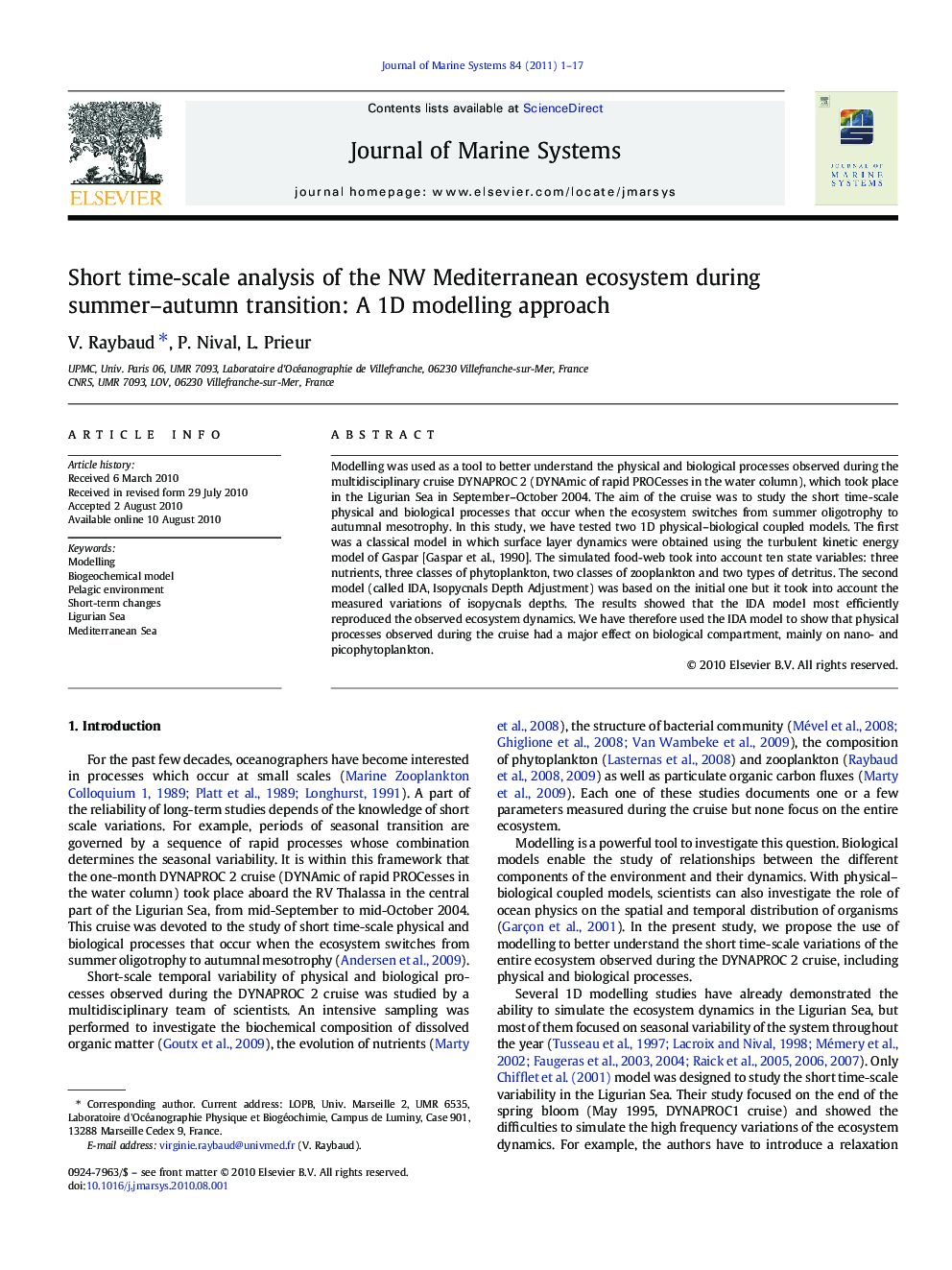| Article ID | Journal | Published Year | Pages | File Type |
|---|---|---|---|---|
| 4548500 | Journal of Marine Systems | 2011 | 17 Pages |
Modelling was used as a tool to better understand the physical and biological processes observed during the multidisciplinary cruise DYNAPROC 2 (DYNAmic of rapid PROCesses in the water column), which took place in the Ligurian Sea in September–October 2004. The aim of the cruise was to study the short time-scale physical and biological processes that occur when the ecosystem switches from summer oligotrophy to autumnal mesotrophy. In this study, we have tested two 1D physical–biological coupled models. The first was a classical model in which surface layer dynamics were obtained using the turbulent kinetic energy model of Gaspar [Gaspar et al., 1990]. The simulated food-web took into account ten state variables: three nutrients, three classes of phytoplankton, two classes of zooplankton and two types of detritus. The second model (called IDA, Isopycnals Depth Adjustment) was based on the initial one but it took into account the measured variations of isopycnals depths. The results showed that the IDA model most efficiently reproduced the observed ecosystem dynamics. We have therefore used the IDA model to show that physical processes observed during the cruise had a major effect on biological compartment, mainly on nano- and picophytoplankton.
